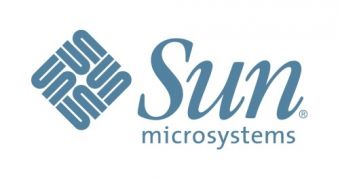Chip manufacturer Sun Microsystems has just received a $44 million contract from the Pentagon to research on viable light replacements for the standard copper interconnects between chips.
According to the chip manufacturer, the Sun researchers have found a method to reconnect the chips in such a manner that would allow them to communicate with each other at significantly higher speeds, which would open the gates for newer and faster processors. The received money would allow Sun to research on replacing the wires between chips with laser beams.
As previously reported, copper nanowires interconnecting microscopic transistors are the most significant brake in manufacturing faster and more energy-efficient chips. When crossed by an electrical current, interconnects are heating up as stated in Joule's Law. Heat modifies its electrical resistivity, which leads to important performance bottlenecks.
Continual research on the silicon photonics field shows that optical interconnects will fight all these shortcomings and would allow faster data transfers between chips. "All of a sudden it's better to have an optical superhighway," said Greg Papadopoulos, chief technology officer and executive vice president of research and development for Sun.
Industry researchers are looking for a way to improve the chips' manufacturing process, by designing larger chips on a single wafer of silicon. The process is called "wafer scale integration," and if Sun manages to find a suitable replacement to standard wires, companies would be able to create faster and more compact computers, that could even deliver more than 1,000 times the average performance in today's machines.
"This is a high-risk program," said Ron Ho, a researcher at Sun Laboratories who is one of the leaders of the effort. "We expect a 50 percent chance of failure, but if we win we can have as much as a thousand times increase in performance."
In order to carry the project to completion, Sun teamed up with Stanford and the University of California, San Diego, as well as two less-famous silicon photonics firms, called Luxtera and Kotura. The program is slated to roll on a five-year period and will be funded by the US Defense Advanced Research Projects Agency.

 14 DAY TRIAL //
14 DAY TRIAL //